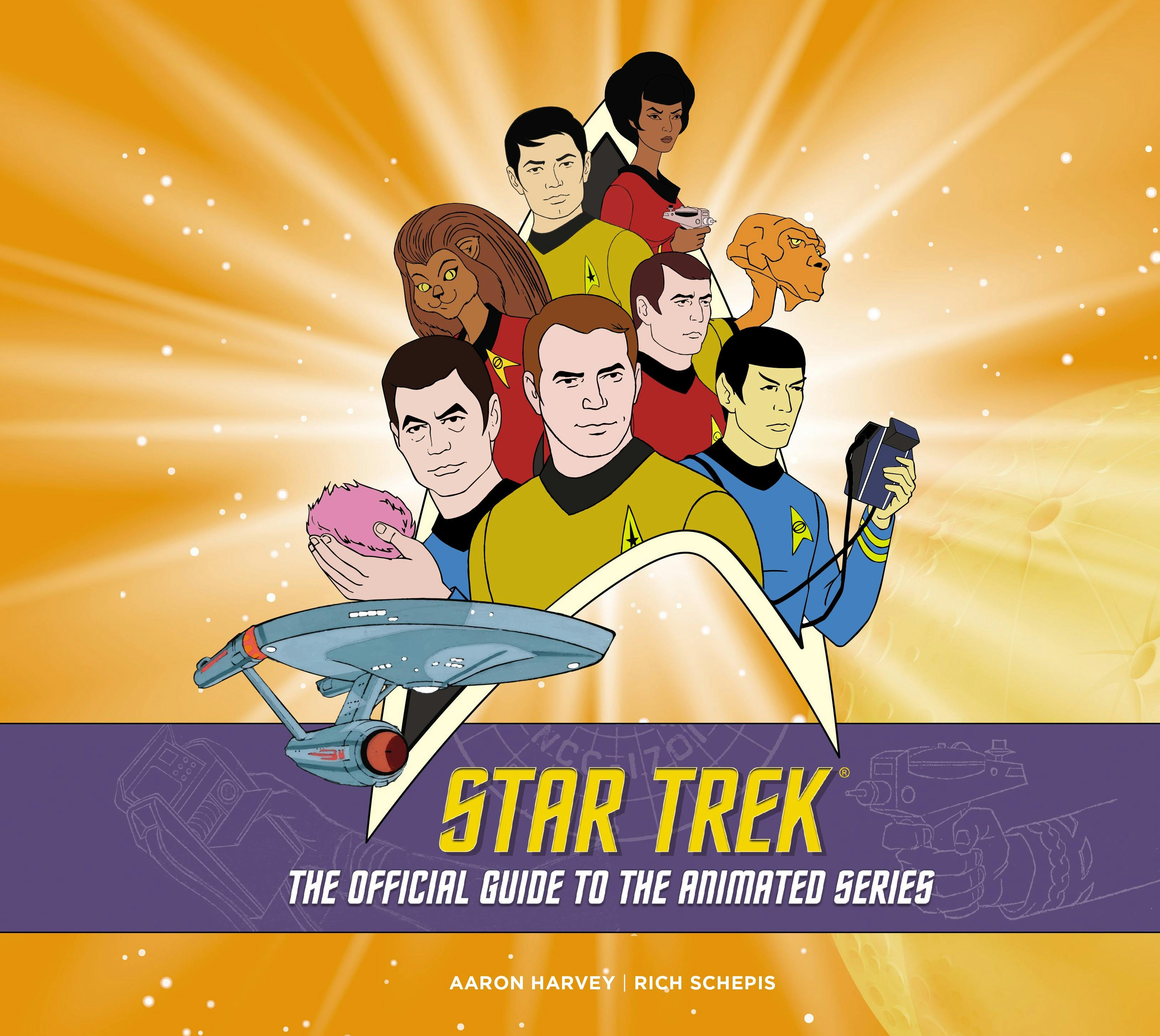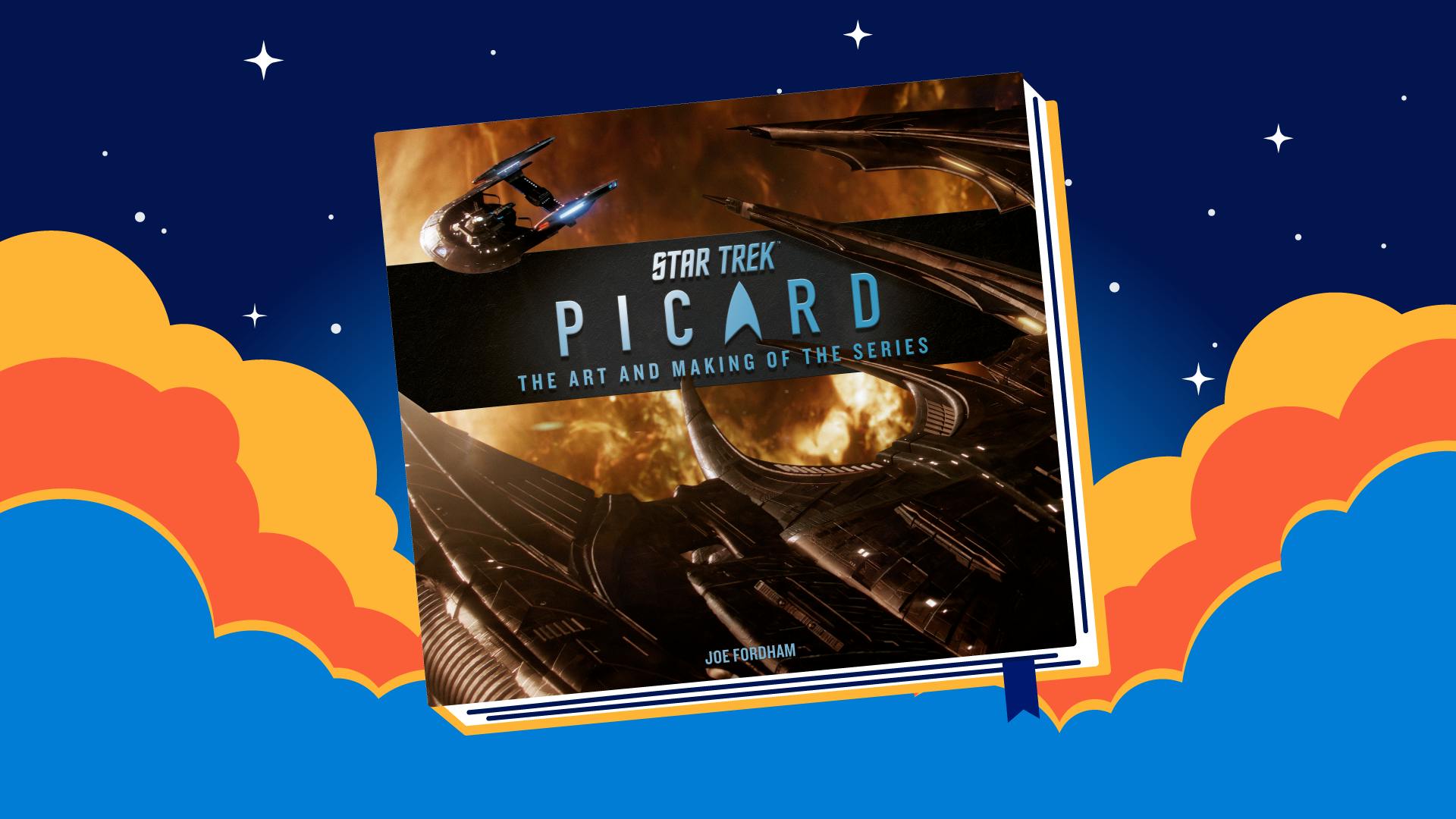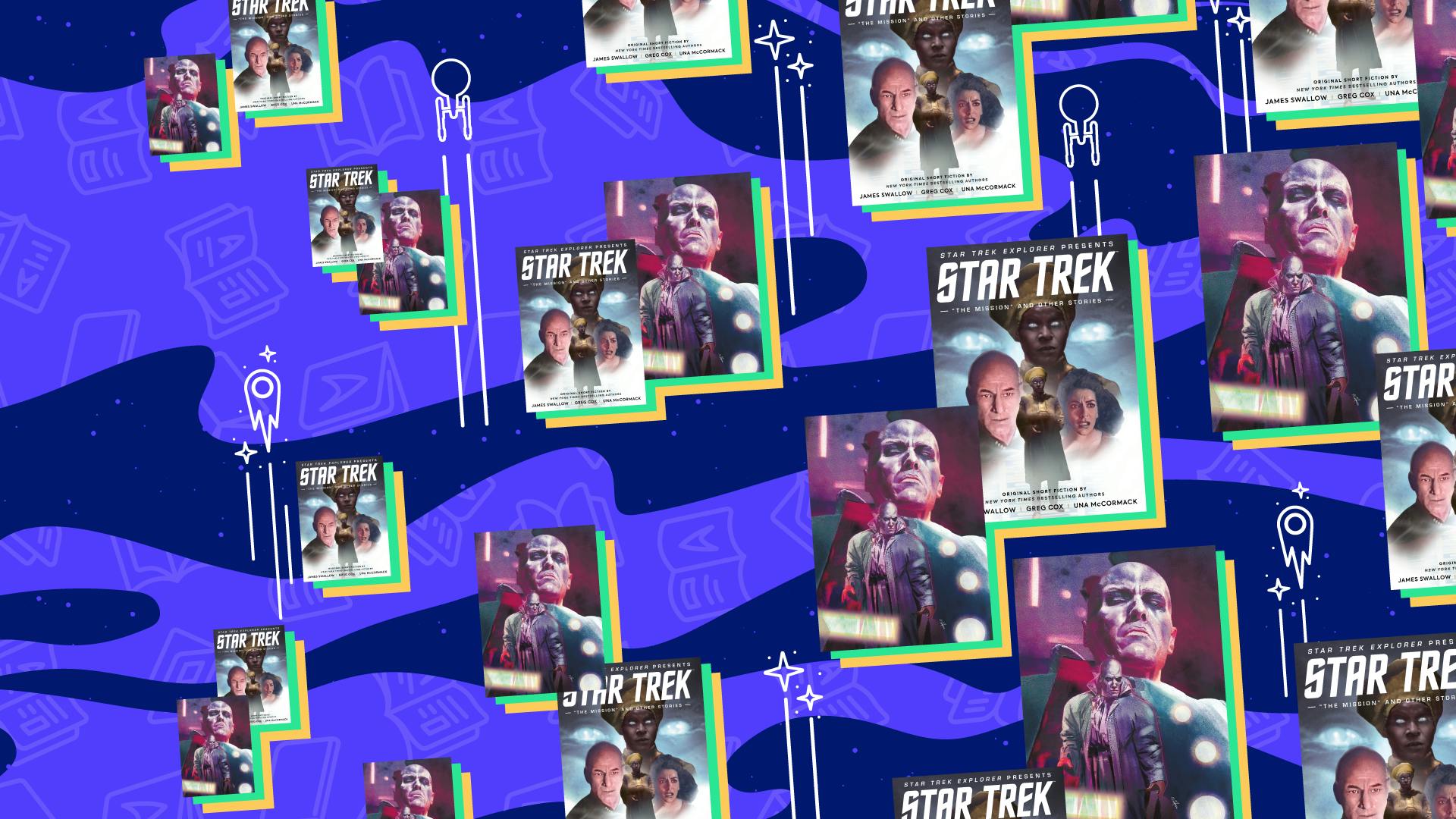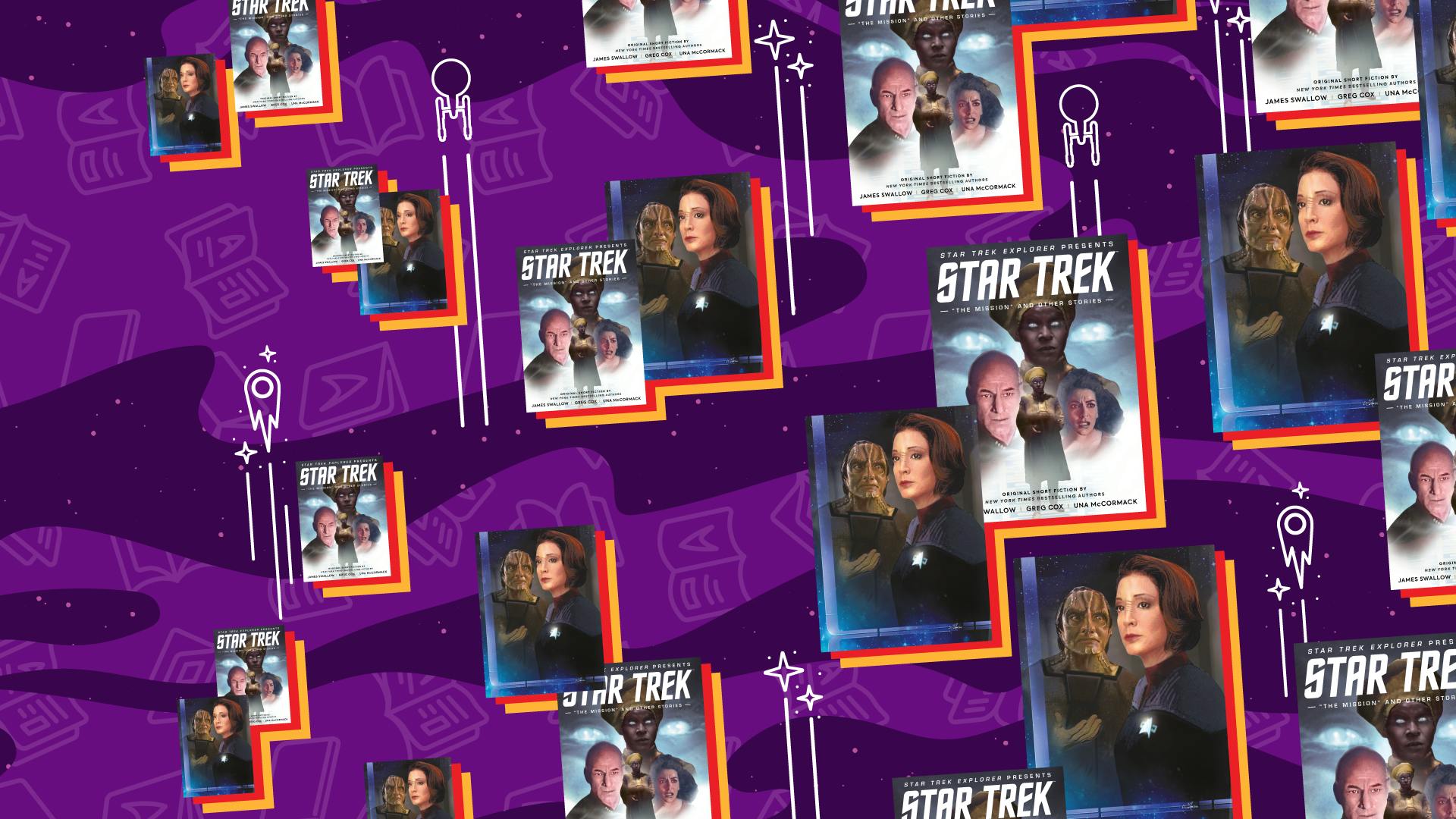Published Sep 3, 2019
'The Animated Series' Finally Gets Its Due... in Book Form
StarTrek.com talks to the authors of 'Star Trek: The Official Guide to The Animated Series.'

StarTrek.com
Star Trek: The Animated Series never got the loved it deserved, even despite winning an Emmy. But that’s about to change. On September 3, Weldon Owen will release Star Trek: The Official Guide to The Animated Series. Written by the tandem of Rich Schepis and Aaron Harvey, it’s the first and only guide to TAS, and it will provide fans with behind-the-scenes production documents, never-before-seen art, and all-new interviews with the people who helped bring the Enterprise's original animated adventures to the small screen over the course of 22 episodes and two seasons. Fans can also expect a Databank encyclopedia of new and returning characters, ships, and planets, as well as trivia, bloopers, and details about TAS's connections to other Star Trek shows. StarTrek.com recently spoke with Schepis and Harvey about their lifelong love of Trek, collaborating on their new book, and more.

StarTrek.com
StarTrek.com: Do you have an especially favorite episode, or a favorite new character developed or plot idea explored in TAS?
Rich Schepis: It’s difficult to pick out just one episode as a favorite, however two I gravitate towards are “Yesteryear,” by Dorothy Fontana, and “The Counter-Clock Incident,” by Fred Bronson (credited as John Culver). “Yesterday” because it delves in Spock’s past and I’m just a sucker for a good time-travel story which this one also covers. “The Counter-Clock Incident” not only officially introduces Robert April into canon, but Bronson explores the idea of ageism. The Federation sends April into retirement, but as the mission proves, he still has something of value to contribute. Plus, when faced with the option of becoming younger to live his life all over again, he chooses not to – powerful stuff.
Aaron Harvey: I'm a ship person, and while I have a few favorite episodes and love that we saw future Trek technology like the holodeck, called The Rec Room in TAS, I really loved the S.S. Bonaventure 10281NCC from “The Time Trap,” even though it was seen for something like four seconds! And yes, that’s the correct registry number! I even did a podcast about it and created a 3-D version. Trying to retcon the description of the ship with all that has happened since 1974 was a fun challenge.
How was the art for the series created back before digital animation existed?
AH: The short answer is hand-drawn cel animation is an animation technique in which each frame is drawn by hand on paper, photocopied onto acetate sheets, and painted on the reverse side. There are multiple layers; say if you have a hand moving to open a communicator, and those layers are grouped and shot one at a time under a film camera. Of course, that all starts with a script and a storyboard, and a voice recording, which isn’t terribly dissimilar to how any animation is done today. It was a much more tactile process. For the book we got to create a two-page spread of how the animation of 1970s was done in TAS-style, as if the crew of the Enterprise was animating their own show. That was a lot of fun!
What inspired you to write a book about TAS?
RH: I’ve been fortunate to write about Star Trek, interview those around the show and more. A book seemed the next “logical” step. The Animated Series was the perfect topic, as it really is the last piece from The Original Series to be given a thorough behind-the-scenes look and analysis – it is the kind of book I would have loved to read myself and as luck would have it, I actually wrote it!
AH: I’ve always been a sucker for 1970s Star Trek. It’s filled with “almost was movies” and “could’ve been TV shows,” and in a pre-internet world it was sometimes unclear if this animated Star Trek was real or just something your childhood brain made up. Even though now you can easily prove the existence of TAS, there are still people who have never heard of it or maybe have heard of it but never saw it. It’s like finding 22 lost episodes of TOS, and we really wanted to share that with fans.
What was the most challenging part of your research into TAS and the creation of this book?
RH: The most challenging part of researching the book was attempting to find artifacts (i.e. – art, scripts, storyboards, etc.). So much has been lost to time, or is still hidden in someone’s basement or attic like the Lost Ark of the Covenant. We were fortunate Bob Kline and Fred Bronson had kept so much of what they worked on while doing the show; they are the unsung heroes of this book.
AH: The most challenging part of the research was trying to figure out exactly when did the cast actually record together? Much like listening to stories about Star Trek: The Motion Picture, ask three different people that question and you’ll get three different answers! And Filmation was very segmented, so it wasn’t like an artist or a writer would probably ever see a recording session. Luckily, we found Fred Bronson, the publicist for the show, who also wrote “The Counter-Clock Incident,” and we think we got as close to accurate as we can. And just as far as book creation challenges, we both live on opposite coasts and this was our first book and first project together, so there were a lot of logistical hurdles and learning curves to mount. But we’re both really happy with the result.
What was your favorite bit of trivia about the development of TAS?
RH: I loved Fred Bronson’s story about when William Shatner, Leonard Nimoy, DeForest Kelley, James Doohan and Majel Barrett came together for the first time since The Original Series was cancelled to record the voices of their characters. Bronson’s sharing of Nimoy’s reaction to George Takei and Nichelle Nichols not being invited back and to the actor’s subsequent demand, which could have forced the entire project off the rails, was marvelous to hear from someone that was actually in the room. As Fred said, “Oh, boy...”
AH: We were privileged to get a folder of Bob Kline’s reference material for the show, things like Star Trek stickers, box art from AMT model kits, black and white Polaroids of the original TOS props. It was amazing! And inside that folder was a color negative. I put it up to the light and couldn’t make it out, so I put it onto the scanner and brought it into the computer, and saw that it was a promotional image from the live-action Filmation Shazam TV show. The program starred Michael Gray as Billy Batson, Jackson Bostwick as Captain Marvel, with his guardian "Mentor” played by Les Tremayne. I had just finished watching “The Counter-Clock Incident” and realized that Mentor and Karl 4 looked an awful lot like each other, down to the type of clothes and cut of the hair. Turns out that he was Bob’s inspiration for the character. I love learning little things like that. It’s such a fun peek into the creative process.
Star Trek: The Official Guide to The Animated Series is 160 pages and costs $24.99 at Amazon.com.




